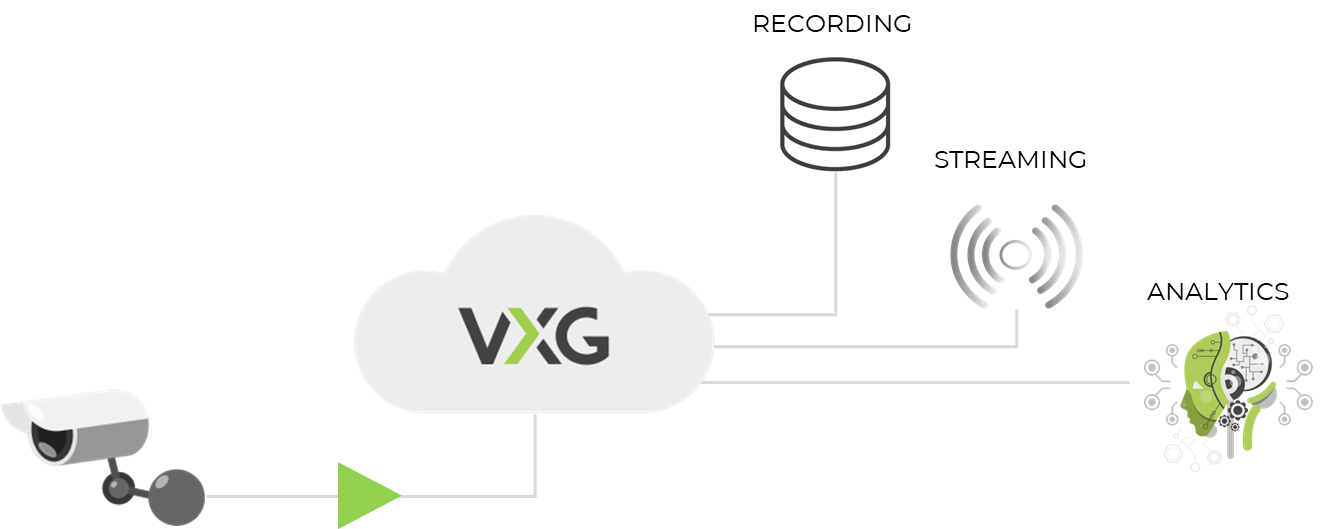Cloud services
Once cameras are connected to the VXG Cloud VMS platform, the videos can be relayed to various cloud services such as recording, streaming, and video analytics.

Recording
VXG uses object storage for video recording. For example, Cloud VMS will use AWS S3 for recording when deployed on AWS. If the platform is deployed on Kubernetes, it can use any S3-compatible object storage, such as Wasabi, LivyCloud, or MinIO.
Streaming
VXG Cloud VMS has an internal fully scalable streaming service streaming data in all standard formats such as HLS, WebRTC, RTMP, and RTSP. VXG connects videos to Content Delivery Networks (CDN) to broadcast to any number of viewers. For example, VXG Cloud VMS will use AWS CloudFront CDN for video broadcasting when deployed on AWS.
Processing
VXG pre-processes videos to make interfacing with other services, such as Video Analytics very efficient. VXG extracts images or clips from any number of cameras at any rate eventually sending a small fraction of data to analytics services. The platform is pre-integrated with leading Cloud AI services such as Amazon Rekognition, Google Vision AI, Azure Cognitive Services. VXG also hosts an open-source vision AI solution YOLO. VXG offers tools and API for connecting to 3rd party services and performs all sorts of preprocessing to make operations cost-efficient.
Events
Cloud VMS handles any number of events generated by cameras or external services. It can extract images and clips for each event, forward events and associated data to other services, filter events based on specific criteria, record events and trigger notifications.
Read more about Cloud VMS functions.